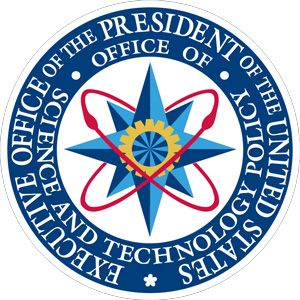Two Views of The Vision
Last week, the Augustine Commission held another public meeting in Washington DC and Dr. John Marburger testified.

Last week, the Augustine Commission held another public meeting in Washington DC and Dr. John Marburger testified. For those just joining our story in progress, Marburger was President Bush’s Science Advisor and the Director of the Office of Science and Technology Policy in the White House between 2001 and 2009. He was a key player in the development of the Vision for Space Exploration (VSE) and his comments on the intent and reality of the VSE were interesting and insightful.
Marburger described a split between NASA and the White House during formulation of the Vision. NASA (led by former Administrator Sean O’Keefe, Chief Scientist John Grunsfeld and an internal study group within the agency) wanted a manned Mars mission (as it has for the last 50 years) while the White House (led by Marburger, his OSTP colleagues and some members of the National Security Council) called for a new direction and orientation of the space program. They favored a return to the Moon with the “mission” of radically changing the rules of spaceflight.
This latter course involved learning how to use the material and energy resources of the Moon to produce life support consumables, electrical power and rocket fuel, thereby creating new spaceflight capabilities. The White House group was informed by an abundance of detailed studies done over the past decade that demonstrated how the resources of the Moon could be tapped and utilized. Given the unlikelihood of significant new money for NASA, they believed that some kind of “game-changer” was needed – a way to step beyond low Earth orbit by incorporating innovative ways of conducting space business. A sustainable path, if you will.
Marburger’s biggest concern was that by inserting Mars as a goal (not by any means an “ultimate goal”) or even a date for lunar return, the path forward would become “burdened by deadlines and difficult budget issues.” He believed that a program composed of small, incremental steps would gradually but continuously expand human “reach” into space beyond low Earth orbit—with economy provided by a template of bootstrapping. The key was to use robotic missions as pathfinders to understand, access and acquire products derived from lunar and space resources.
As these differing threads were woven into a policy statement, NASA viewed the VSE as the next “large space program” for the agency. NASA’s traditional template dominated public discussion of the Vision, where gaps, arbitrary time scales and the long-desired human Mars mission as the “ultimate goal” became familiar talking points – not surprising, considering that the agency had sole custody of the VSE after it was crafted. Lunar return by 2020 was not meant as a deadline, but it is widely interpreted as such. Although the VSE is careful to mention trips to “Mars and other destinations,” the latter part of that phrase seldom appears in NASA charts.
The subsequent Exploration Systems Architecture Study (ESAS) is pure NASA. In classic agency fashion, “Apollo-on-steroids” (big giant booster, mega-capsule and gargantuan lander) was rolled out. The programmatic significance of Ares V in the architecture should not be overlooked – delivering 150 metric tones to LEO, it is a rocket designed for human Mars mission done in the Apollo-style, with everything needed for Mars dragged up from the deep gravity well of the Earth. It is overkill for almost any other space job, including missions to the Moon. Overkill can work, if you have the money (although it isn’t good practice even if you do have the money). But even with the most optimistic assumptions, the ESAS doesn’t fit into NASA’s current or projected budget.
Marburger’s concern is exactly what has happened. NASA thinks that its principal mission on the Moon is to conduct Apollo-style local site exploration and serve as a test-bed for the Mars flags-and-footprints extravaganza. The idea of building a spaceflight infrastructure using lunar resources was swept aside. An Apollo-like architecture was developed but with no political backing to pay for it. Now the agency finds itself subject to a protracted and embarrassing “public audit” of its mission and methods of doing business. The country is not disposed to a significant increase in spending on space, not just because of the poor state of the economy (although that doesn’t help) but because they think we are already spending the right amount. The comfortable, old shoe cannot be resoled; you cannot conduct space business today using the Apollo model, whereby technical difficulties are bludgeoned into submission by cash and long hard (and expensive) man-hours of work.
The way forward involves approaching the problem differently. Marburger’s take on the VSE is adaptable to any budgetary level. It makes continuous progress, using small steps when times are tough and larger ones when things are flush. It sets no deadlines but it does set strategic directions – incrementally beyond low Earth orbit, using what we find along the way to create new capabilities and possibilities. It has intermediate milestones that map progress and provide societal payback. It brings commercial enterprise along, with the aim of expanding our space economy and high-technology industrial base. In other words, it is sustainable. It is the antithesis of the conventional form of space exploration.
Given the dwindling amount of money for discretionary spending in the federal budget, perhaps the idea of using lunar resources to build a sustainable infrastructure in space should be embraced.
/https://tf-cmsv2-smithsonianmag-media.s3.amazonaws.com/accounts/headshot/blog_headshot_spudis-300x300.jpg)
/https://tf-cmsv2-smithsonianmag-media.s3.amazonaws.com/accounts/headshot/blog_headshot_spudis-300x300.jpg)